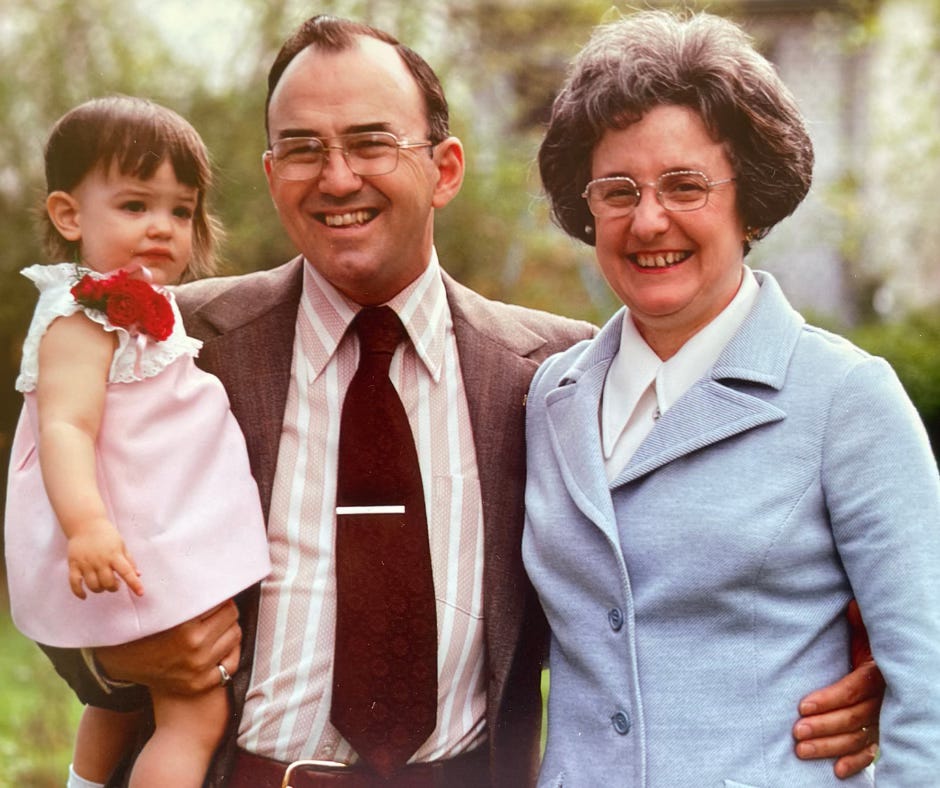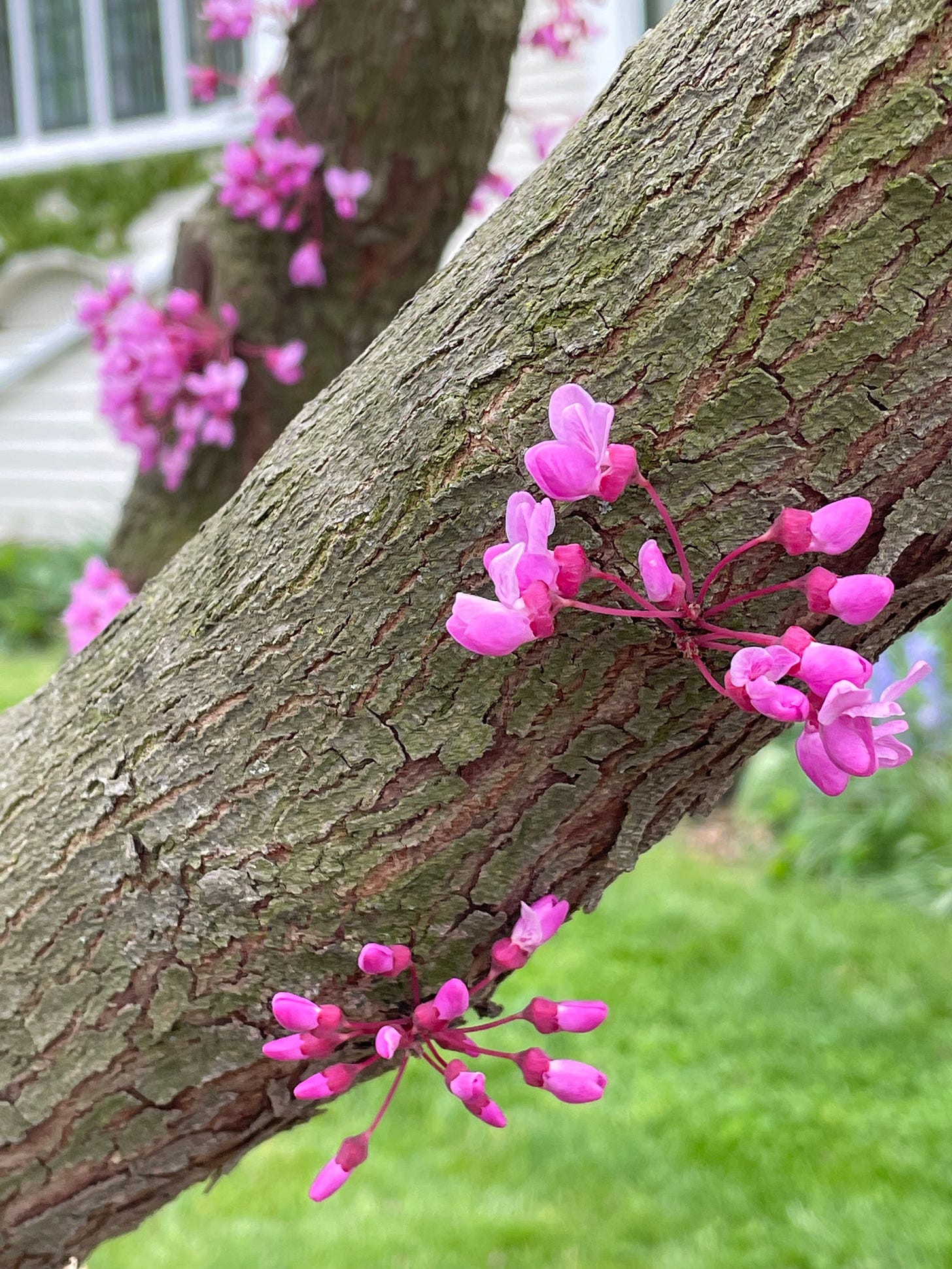Business first: You’ll find my new translation of the Hymn of Gaia at the end of this post, along with the link to the LIVE CHAT on Sunday, April 13, 2025 at 2pm EDT (remember to adjust for daylight savings if you live abroad).
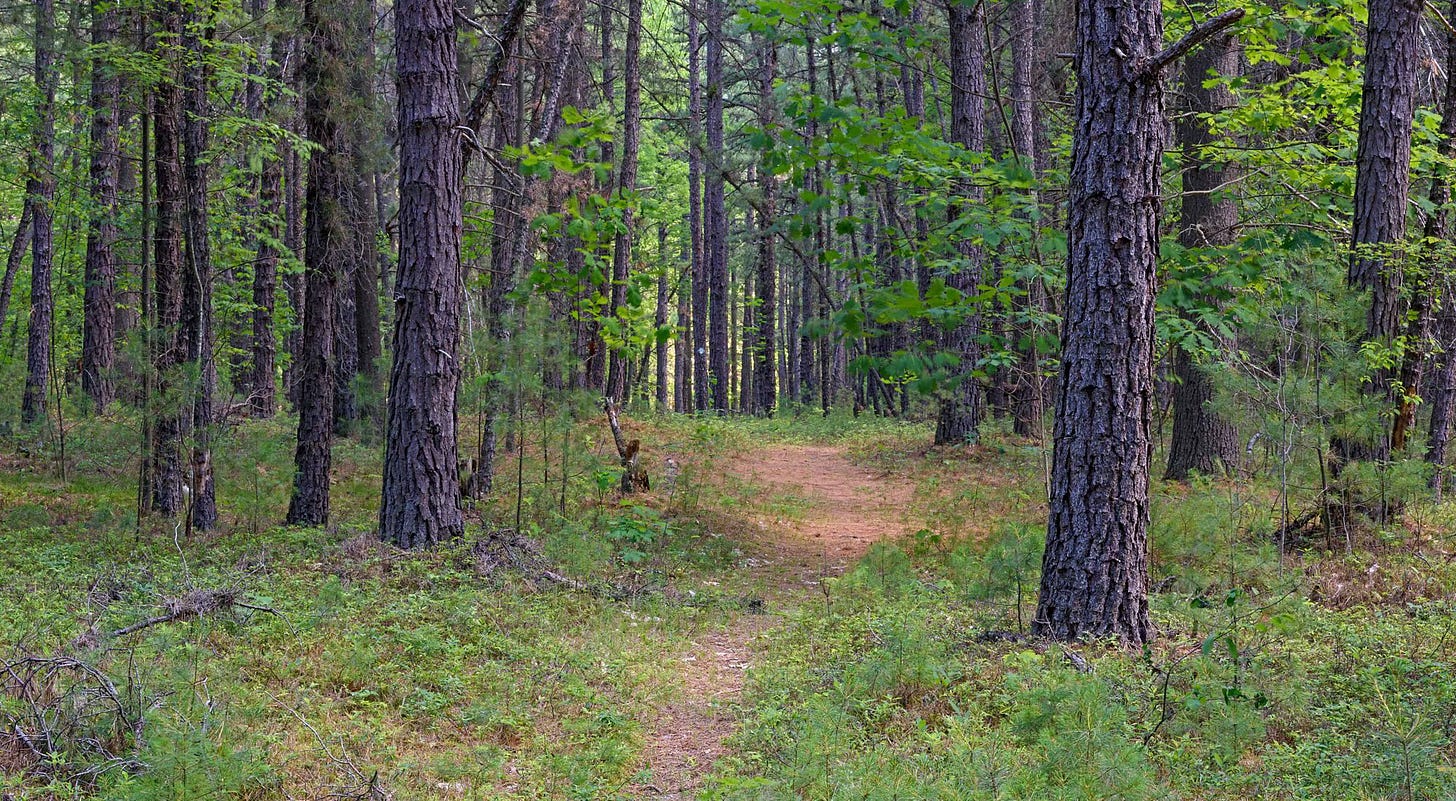
What does my grandmother want to tell me about the Holocene?
My grandmother and I were sitting around a campfire at night, in this dream. It was somewhere in the Jersey pine barrens, at night, and the stars were not particularly visible through the overhang of the scrubby trees that are such a feature of that unique and protected landscape.
We had never done such a thing in real life, though she knew how to make a fire, because she’d been a Girl Scout Troop Leader for many years back in the 1950s and 60s. And though I loved my grandmother dearly and, as an adult, have come to appreciate her incredible grit and keen intelligence, we weren’t particularly close when I was growing up — not least because I’d spent my formative years halfway round the globe in Borneo. I’d only come to know her as a tween, and to be honest, her earnest brand of mid-century do-gooder Christianity didn’t match my vibe.
She was a Methodist choir director and Sunday School superintendent, the sort of working class woman who would rent a bus to drive all the neighborhood children into Philadelphia to go to the museum, rather than just taking her own children, because she felt everyone should have the same “uplifting” opportunities. She ran a tight household. No drinking. No gambling. She possessed many (many, many) small cut-glass dishes, each of which had a separate function — this one for celery, this one for baby onions, this one for applesauce.
As I turned into a sullen teen, then an even more sullen young adult, her earnest striving seemed outré. Those glass dishes embarrassed me, as did the fact that the only books in the house were the Bible, Christian magazines, and Reader’s Digest.
But in this dream, none of that mattered. My grandmother simply sat with me around the fire in quiet companionship.
The embers smoldered and crackled. The smoke wreathed our hair.
Finally she stirred, adjusted her skirt, and looking me straight in the eyes, asked, “What about the Holocene?”
Unlearning How to Think
When I woke up, my groggy brain was already trying to (foggily) formulate a response. My first thought was literally something like (and I kid you not): “Do you mean Holocene as opposed to the Anthropocene? Or should we, even better, refer to this time period we’re in as the Plantationocene, to account for the enduring violence of the corporatized and racialized colonialism that has transformed the planet’s face?”
Seriously. I thought that AS I WAS WAKING UP. Welcome to how my brain works.
I’ve gotten a lot of pats on the head over the years for being a smarty pants. Academic awards. Full scholarships. Opportunities to sit at the feet of The Greats™️. And I am very, very grateful for that. Critical thinking and opportunities for higher learning are vital to our survival (I feel like I need to emphasize this especially now as all three of my Alma Maters - Brown, Princeton, and Columbia - have lost their federal funding under the Trump administration). I literally could not do my translation work without the training I received as an undergrad and grad student.
And yet. And yet. I left academia because I wanted to be IN the world, not positioned as though I were somehow OUTSIDE of it, looking in. This earth is too beautiful, too ugly, too wonderful, too horrific, too MUCH to be studied at arms-length.
So as my groggy head started to formulate “intelligent conversation” to answer my grandmother, a second impulse emerged. I opened my eyes and took in the fact that it had all been a dream. I stopped intellectualizing, recalibrated, and got curious.
Why the surprising word “Holocene”? And why my grandmother to deliver it? And why, of all places, the Pine Barrens - a place I have always hated for its scraggly undergrowth and buggy, brown, cedar-stained swamp waters?
The answer came to me quietly, like an unfurling bud. It was Gaia.
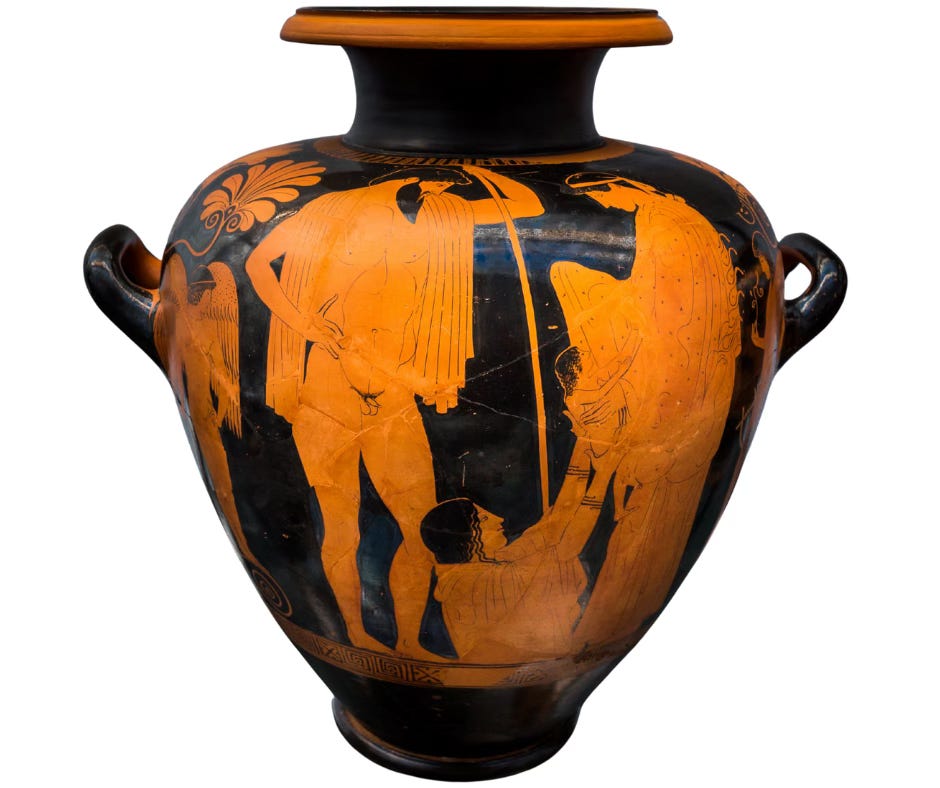
Gaia, Ancient Mother
Gaia is perhaps unique among the Orphic deities in that even mainstream modern science has a way of understanding Her that gestures towards animism. In the 1970s, scientists Lovelock and Margulis floated the “Gaia theory,” which saw the Earth as a living being — a single organism with processes that strive to maintain homeostasis so that it (She) can thrive.
In this view, Gaia is an unfathomly ancient Being. She measures Her days in Epochs, each of which last millions of years: Jurassic, Paleocene, Eocene, Pleistocene, Holocene. (To name but a few.) Each Epoch belongs to a longer Era, each Era to a longer Eon. When my grandmother looked at me in my dream and asked me “What about the Holocene?”, she was reminding me that all of recorded human history has taken place during one of Gaia’s “days.” (And even our deepest hominid ancestors go back only about 2 1/2 epochs, or Gaian “days.”)
Gaia is Deep. She is Old. She has nurtured us all. This, we can feel in our bones.
And indeed, Gaia’s Orphic Hymn is full of imagery that supports our intuitive understanding of Earth. She is called (among other things), “Mother,” “Nurse of All,” “Sprout-grower,” “Fruit-bearer.” She is “Everlasting” and “Eminent,” “Deep-breasted.” She swells, buds, fruits, and births. The images of life and growth bursting forth from her are so arresting, so familiar, that it would be easy to stop there and, like so many New Agers, sweep Her into the general category of “Mother Goddess” without really considering the depth of insights the hymn is offering us.
The Orphic Hymn of Gaia does reaffirm what we know of Her (though we’ll talk a bit more in the Live Chat on 4/13/25 about some of the esoteric meanings even of this mother/nurse imagery). But the strange beauty of the hymn’s poetry invites us to take a second, closer look.
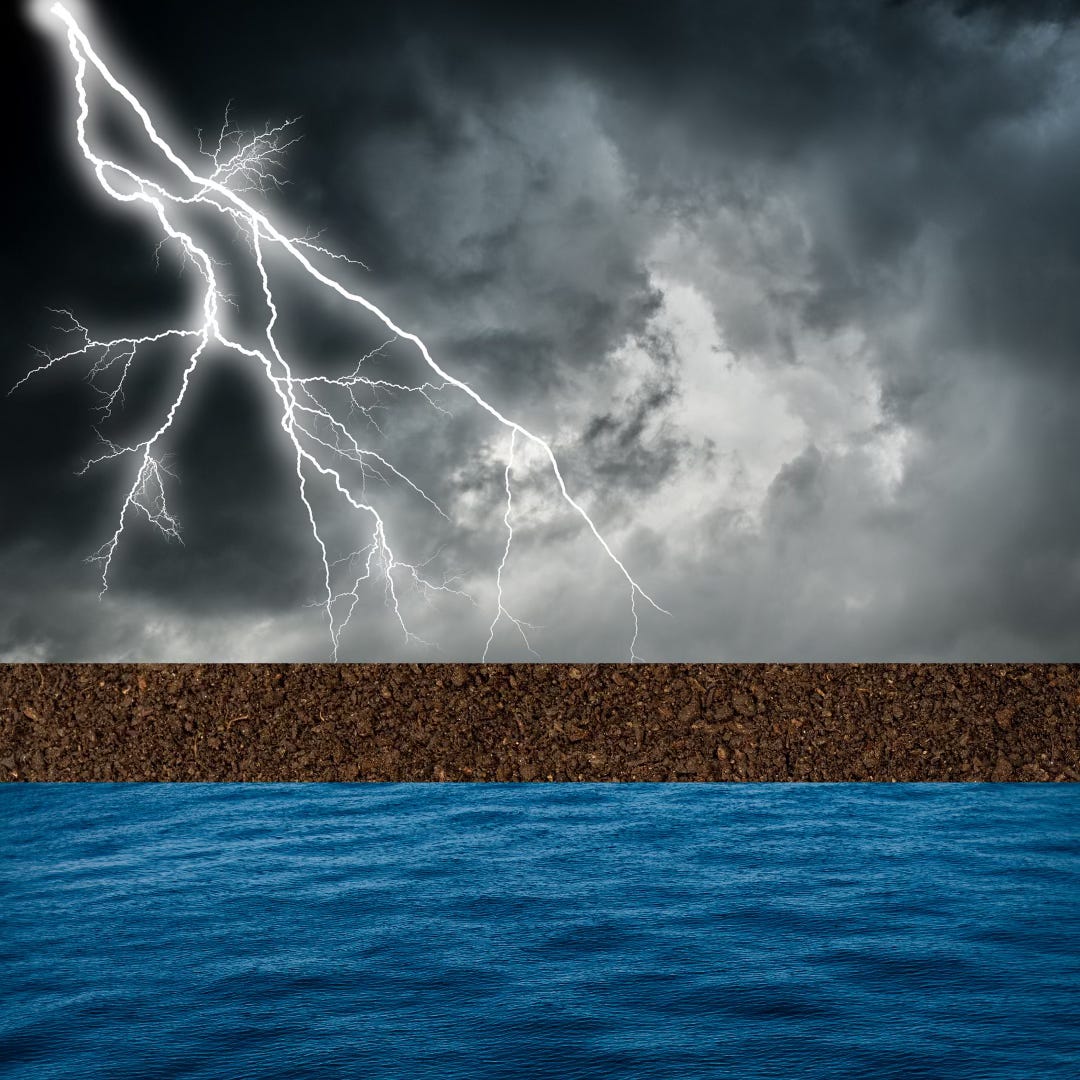
Elemental Principles
Let’s take, for example, the four elements as defined by Empedocles. It would be natural to assume that Gaia would be associated with Earth. But this does not seem to be (at least entirely) the case for the author of the Orphic Hymns.
Rather, we find that Gaia rejoices (Greek: xairousa) in the “sweet exhalations” of flowers - indicating an affinity with air, and in all types of rain (Greek: ombroxarēs). This makes sense, as far as it goes, because of course, Earth is just as much a place of oceans and air currents as it is of land.
But then, even more strikingly, we have the gorgeous metaphor of Gaia as surrounded by stars that are being whorled around in a liquid-like stream. Again, most obviously, we could read this simply as a lovely image of the stars wheeling above us at night, as though we (and Gaia) were the still center-point at the vortex of a whirlpool.
As ever with the Orphics, there’s so much more to those verses than a pretty image. We see here resonances with the work of pre-Socratic philosophers Thales, who took water to be the most primal element, and Heraclitus, whose enigmatic statements about river flows preserved teachings about the way the cosmos both is and is not the same as the One. (He most famously said, ton auton potamon ouk an embaiēs, or “You cannot step twice into the same river.”)
These similarities between the Orphic Hymns and pre-Socratic thought are not coincidental, for as most scholars now accept, the origins of pre-Socratic philosophy are inextricably bound up with the Orphic Mysteries. (See, for example the important article by Aryeh Finkelberg, “On the Unity of Orphic and Milesian Thought.” The Harvard Theological Review 79, no. 4 (1986): 321–35.)
But the language we find in the Orphic Hymn of Gaia exceeds the bounds of philosophical discourse, because it is a fully embodied engagement with the deity Herself, rather than an arms-length analysis of Her.
Gaia both IS and ISN’T the elements, and experiencing Her takes us out of the logic of either/or and into the familiar Orphic territory of the both/and. (I’ve written about this non-binary logic of Orphic “fractal animism” here, an audio version of which you can find here.)
Gaian Joy
The experience of Gaia, for the Orphics, is first and foremost, one of joy.
Does this surprise you, being situated, as we are now, in a moment that is often described (and maybe rightly so) as an apocalypse? Are we so inundated by tales of destruction and ecocide that we have come to expect our emotional responses to the Earth to be primarily those of grief?
I have written extensively about climate grief in my writings on the Orphic Hymn of Adonis (linked below), and far be it from me to say that heartbreak is not a completely natural and even laudable emotion to experience when we witness our ever-multiplying environmental crises.
But I want, just for a moment, to focus on that joy.
JOY is what the hymn (in its final lines) asks Gaia to bestow on us. It is in Her very nature to increase and amplify Life, to nurture in us that bountiful, immense feeling of joy that wells up when we feel ourselves amply resourced.
And I don’t know about you, but I could stand a bit more of that these days.
Think about it. You already know this about Her. Gaia is who you feel when you spy the first crocus of Spring, or hear a crow cawing warnings to its fellow birds. She is who you feel when you dip your toes in the sea, when you smell the scent of forest pines, when you (or your children) jump in a puddle.
And when you are literally picking up the pieces of a wildfire or hurricane or earthquake, Gaia is the one who sends up the shoots through the cracked foundations. She makes gardens in Gaza and Chernobyl. She nurtures creatures in the sands of the Atacama Desert and in the depths of the Mariana Trench.
We will have time in the Live Chat to go over the esoteric goodies hidden in the Hymn of Gaia. There are many. And they are important for the history of both philosophy and esoteric traditions like astrology and Hermeticism.
But if you only take one thing away from Gaia’s hymn, let it be this: in times of distress and chaos, She is always right there, under our feet, waiting to “magnify joy in Her offspring,” which is to say, in you and me.
She meets you wherever you are. Even in dreams of New Jersey, with the face of your own grandmother.
Yours in Earth and Starry Sky,
✨✨ Kristin





